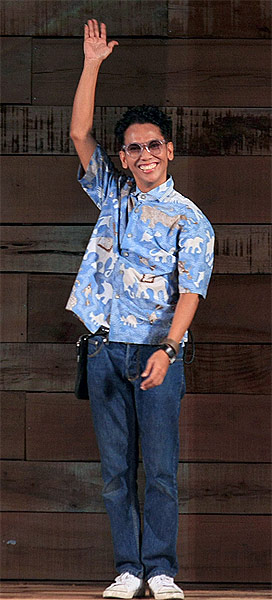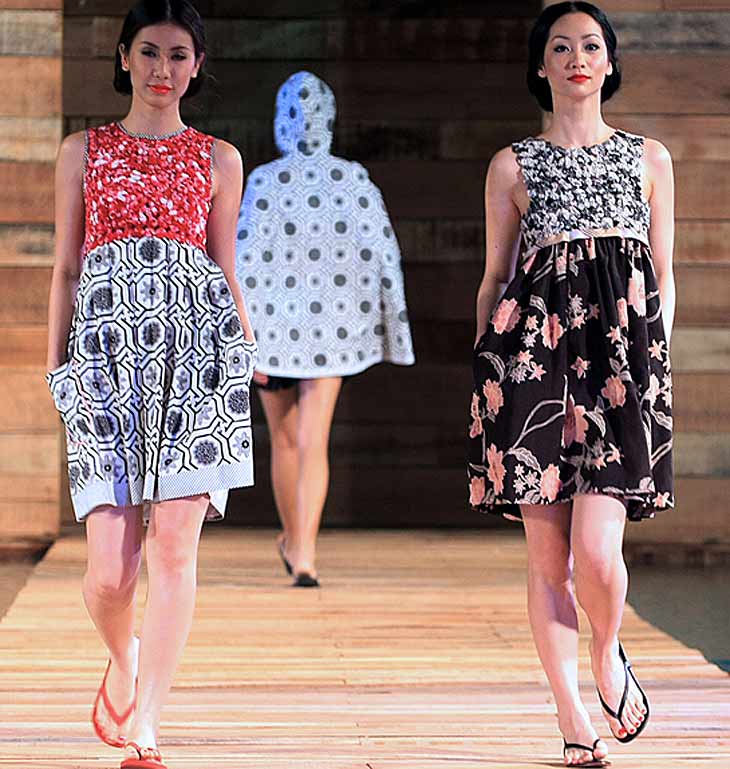ADD URL
>>>>design
designer
collections
catwalk tv
who is who
motor
culture
film
foto
interior
cuisine
astrology
cosmetics
fragrances
antiAging
hair
beautyradar
styleradar
fashion.at - magazine |
search |
Part One
On 24 May 2008 the Indonesian designer Edo aka Edward Hutabarat (born in Medan on 31 August 1957) presented his new ready to wear collection under the title “Batik The Upper Ground” in front of 700 guests from fashion professionals, celebrities, public figures to ambassadors of foreign countries at The Sultan Hotel Jakarta. The 80 Part One pieces are covering the ambiance of air, water, earth, wood. >Question: Why is the label's naming "Part One"? Part One was launched in 2007. It started as an alternative to promote Indonesian clothings in modern proportions. “The bottom lines are its characters—down to earth, light, and colorful. “Down to earth” tend to convey Batik as a lifestyle. I have never persuaded people to wear Batik in overrated makeups neither grabbing lots of new stuffs; just be your self! Hence, I called it “light” whilst “colorful” means fun and fresh. It should be young spirited.” Edo >Question: What's about the theme of the presented collection “Batik The Upper Ground”? What is The Upper Ground? Since 1996 Edo is clothing designer and researcher in textiles and crafts; he loves to work with and write about Batik. “I wanted to show that Batik can keep up with time, like ‘yesterday, today and what about tomorrow? For tomorrow, we of course have to learn from today so that Batik keeps existing in the future. Batik is no longer history but the present and future.” Edo cultivates as a member of the Wastraprema (the Indonesian Traditional Textile Society) the Indonesian art craft. "The term Batik visualizes a continuous process with an end product. Batik is a Javanese word and refers to the coloring of cloth using wax with a dyeing resist technique. The process is repeated as many times to achieve the desired color. Thus, its colors represent the length of time of its process. Its intricate pattern, waxing, dyeing, and maturing process determine its price range." Edo Batik is an important part of the Indonesian lifestyle. It was mentioned from the ancient monarchy (on Negarakertagama, wrote by Mpu Prapanca 1335-1380) to recent days literatures. "Perhaps, Batik is the most known to be amongst the daily lives of Indonesians, especially in Java. Some even say that Batik in Indonesia is worn from a person’s birth until their death, considering the gedong and gendong (baby wraps) and that of which is used to wrap corpses are made from Batik. It is also used on most tribal rituals such as marriage and religious ceremonies." Edo
|
© since 1996 sawetz |

